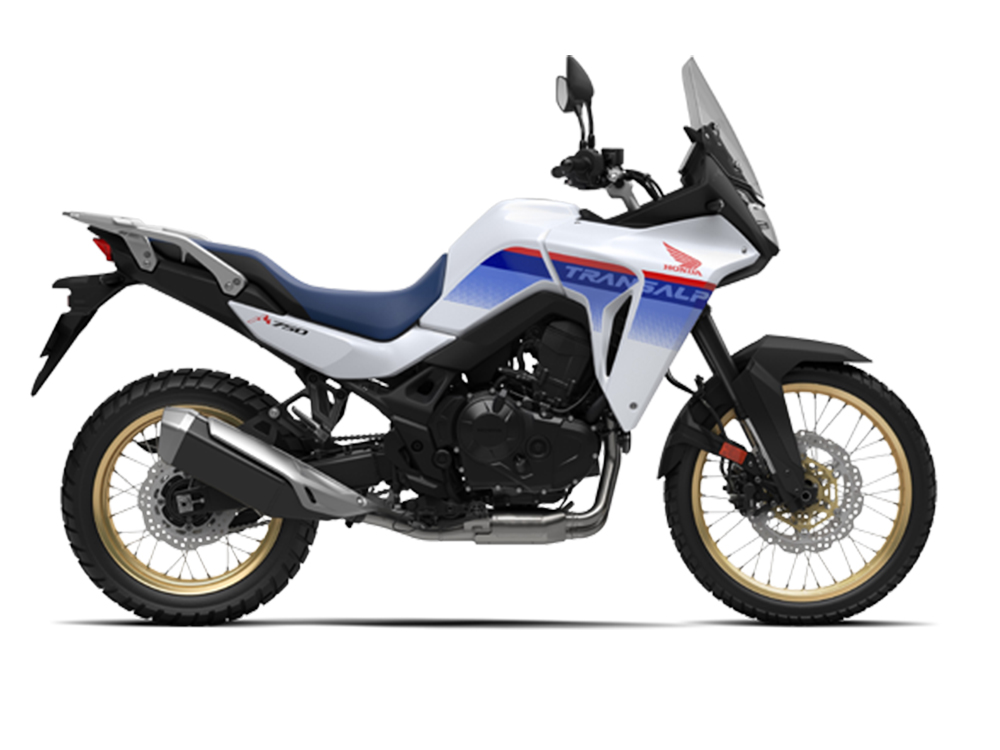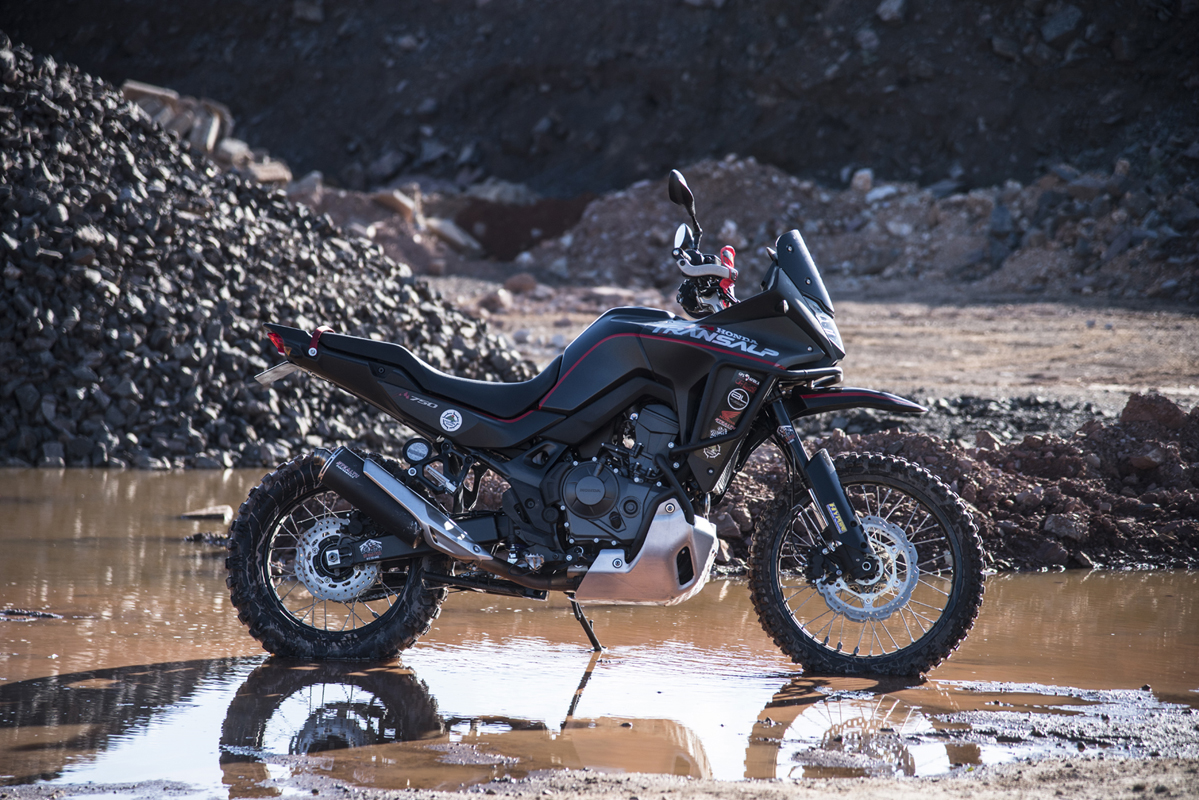
I took a cruise out to the recent Rally Raid event held at ADA, Heine Engelbrecht’s superb training facility out near Harties. While there, I saw a pimped-out Transalp 750 referred to as “Transalp Wild”. It looked spectacular. Full knobblies, Cycra handguards, Hyperpro suspension, fat bars, bash plate, crash bars, wide offroad pegs, quick shifter, Stealth slip-on, tiny indicators, and the back mudguard removed. It looked like a real offroad weapon. It turned out to be a Honda SA bike that they were experimenting with. Emblazoned with stickers and with the screen shortened and blacked out, it looked purposeful and aggressive. The front sprocket has also lost a tooth to shorten what is excessively long standard gearing.
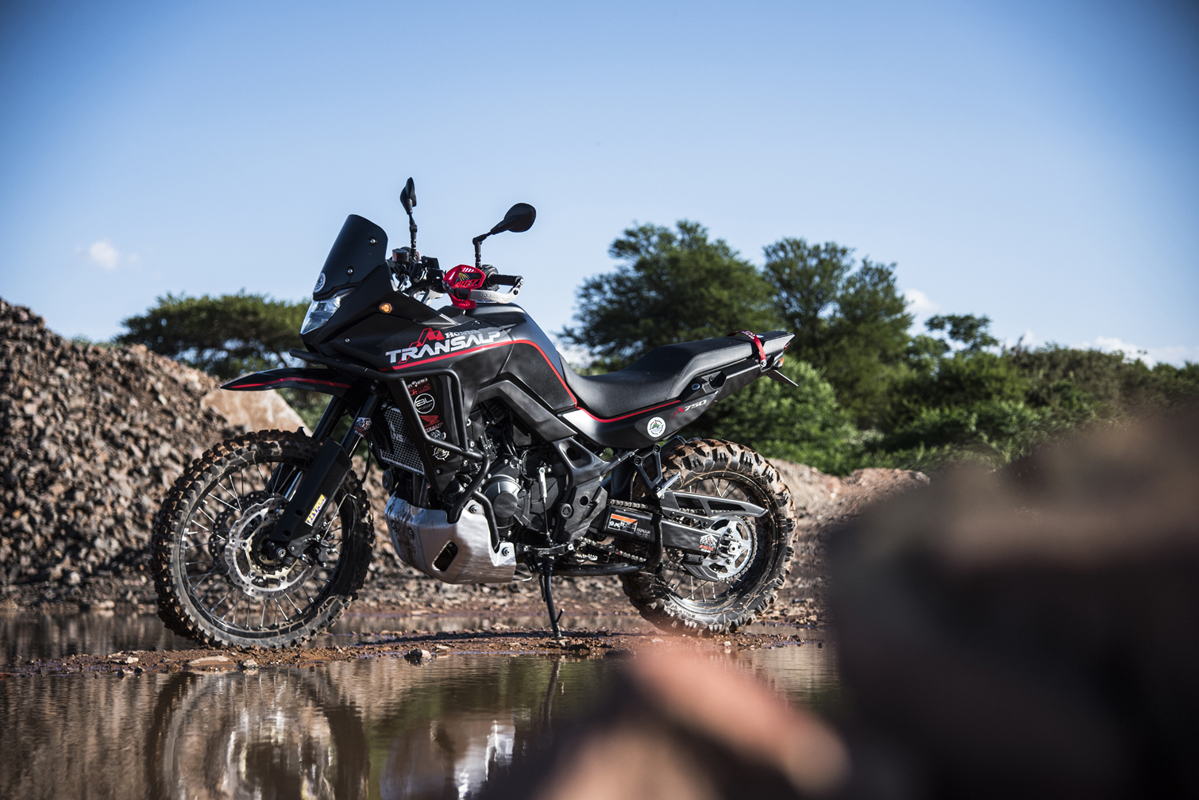
Fast forward a month or two and I got a call from Pierre Terblanche from Footpeg Diaries, asking whether I would like to spend some time on the bike. Absobloodylutely! I picked up the bike and rode it over the next couple of weeks, riding town and around, with a bit of off-road thrown in. I found myself in a bit of a quandary. Motorcycles are literally where form and function meet. Take a Honda Fireblade for example. Its sole reason for being is to go fast on a racetrack and on immaculate roads. It is the part and completely looks the part, except for what it needs to make it roadworthy and street legal, everything else serves at the Altar of Speed. Similarly, a CRF 450 X is built to function superbly offroad and pays little attention to comfort or touring ability.
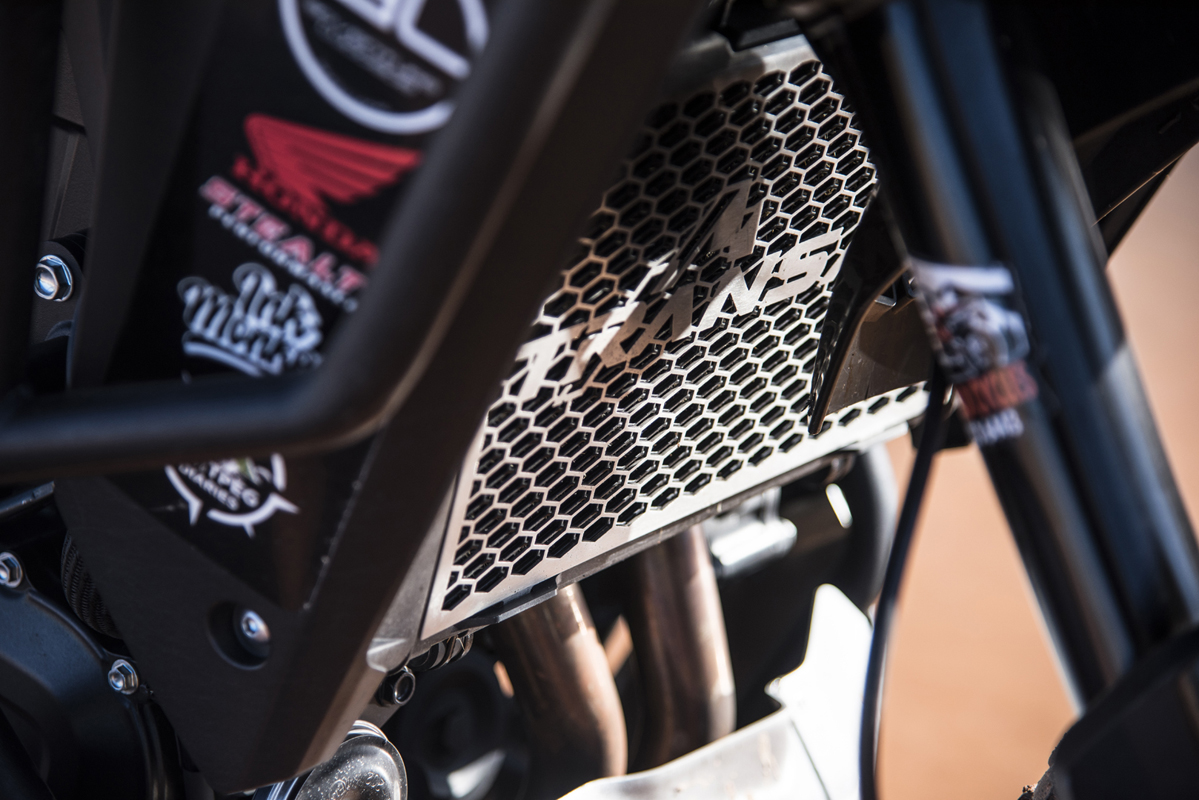
Adventure bikes are a different kettle of fish. These are the Swiss army knives of the motorcycle world. They need, foremost buyers, to cater to a broad set of needs. They need to smash huge distances in comfort, rail through mountain passes, cater for pillion comfort and be happy commuting to work. Having said that, there are some for whom adventure biking is their weekend sport. They get their jollies riding their adventure bikes over terrain which baboons struggle to traverse on all fours. For these guys (and guyesses) riding those routes on a plastic offroad weapon would not provide sufficient challenge and bragging rights.
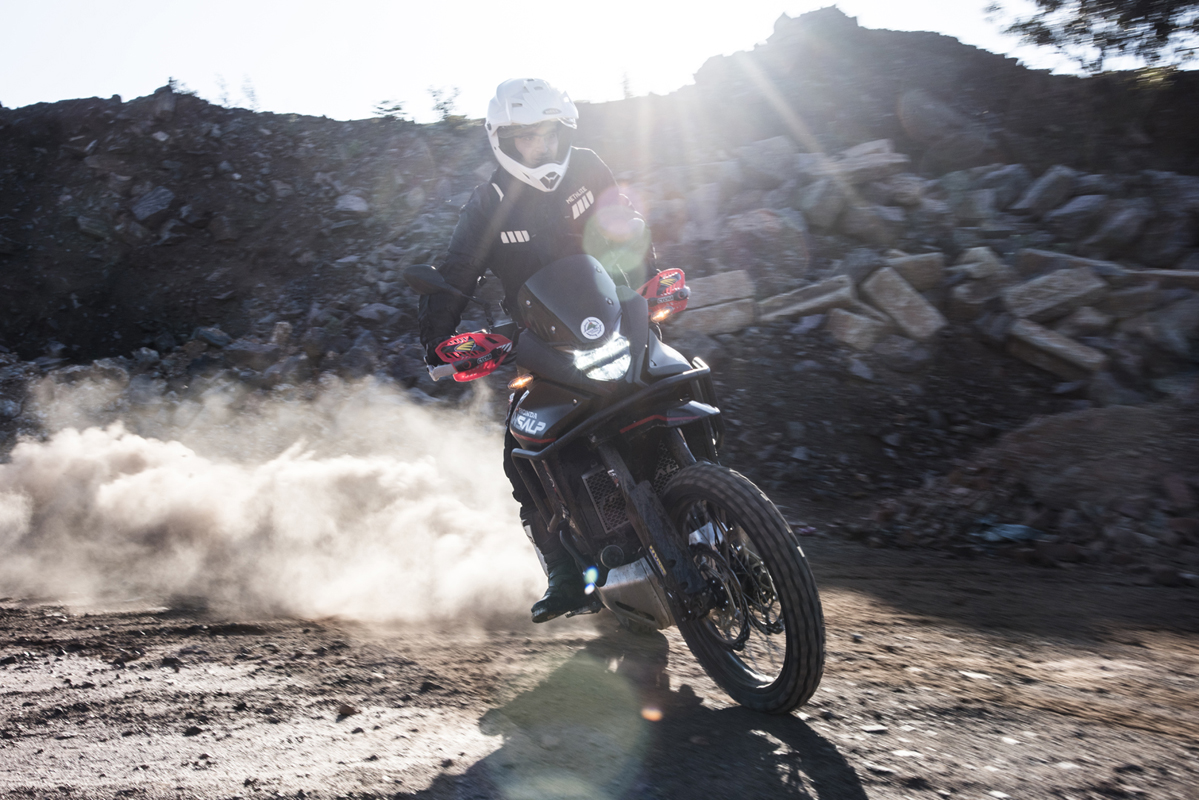
I fall more into the first category. I use my bike day in and day out. I use it in my city travels, do extended tours, and less frequently traverse dirt roads and very occasional shorter gnarly tracks. These normally present themselves during the course of my travels, like when riding onto the pans in Botswana to view the pelicans and flamingos, crossing the pans from Kubu Island to Gweta, or tackling the deep sand tracks to a campsite in Khama Rhino Sanctuary or Elephant Sands. The fact is, most of my riding is on tar roads but I need the ability that the bike gives to access the places I want to go.
Your bike setup will depend on how you intend to use the bike. For example, full knobblies would make no sense on my bike. All the good road handling attributes of the bike are negated by the choice of tyre. I would have to endure the bulk of my ride so as to only enjoy a bit of dirt. A 50/50 tyre would be a better bet for me than an aggressive knobbly. Scorpion Rally STR’s rock both on road and off. Why you would put more aggressive tyres on your adventure bike and compromise so many of its strengths is beyond me. My suspension is adjusted to damp effectively through its stroke and perhaps bottom out gently on the biggest of hits. This way it gives the best ride, allows maximum traction and hooks up best on loose surfaces.
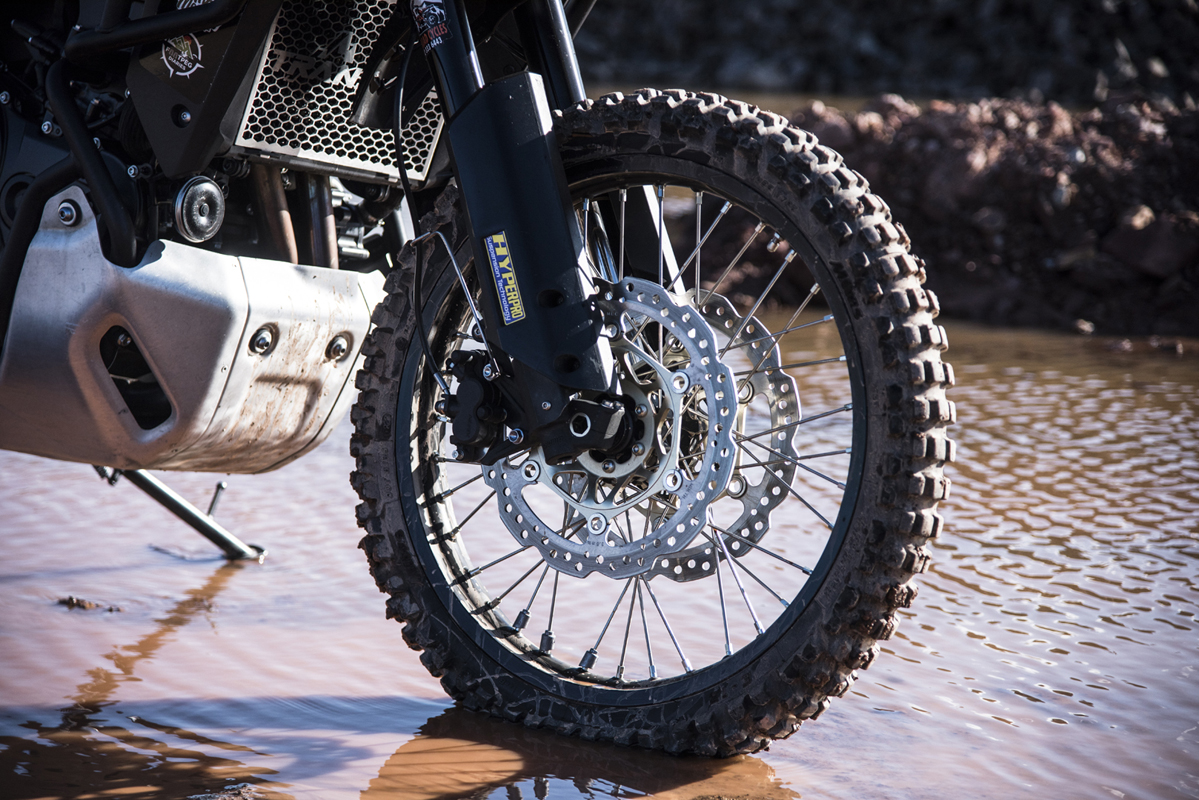
Honda’s design brief was to build a middleweight adventure bike that would cater to the broadest spectrum of needs and riders. It would work superbly on road, where it was likely to spend most of its time, and still perform adequately to enjoy a blast down a dirt road. As I stated in my assessment of the Transalp after the launch, I believe that Honda succeeded admirably in their task. Unless you are the closet dirtbike weekend warrior type that is. Then you would feel that it was not hardcore enough for your liking. The Transalp Wild is an attempt to present you with a Trannie with stubble on its face and fire in its belly. So, have they succeeded?
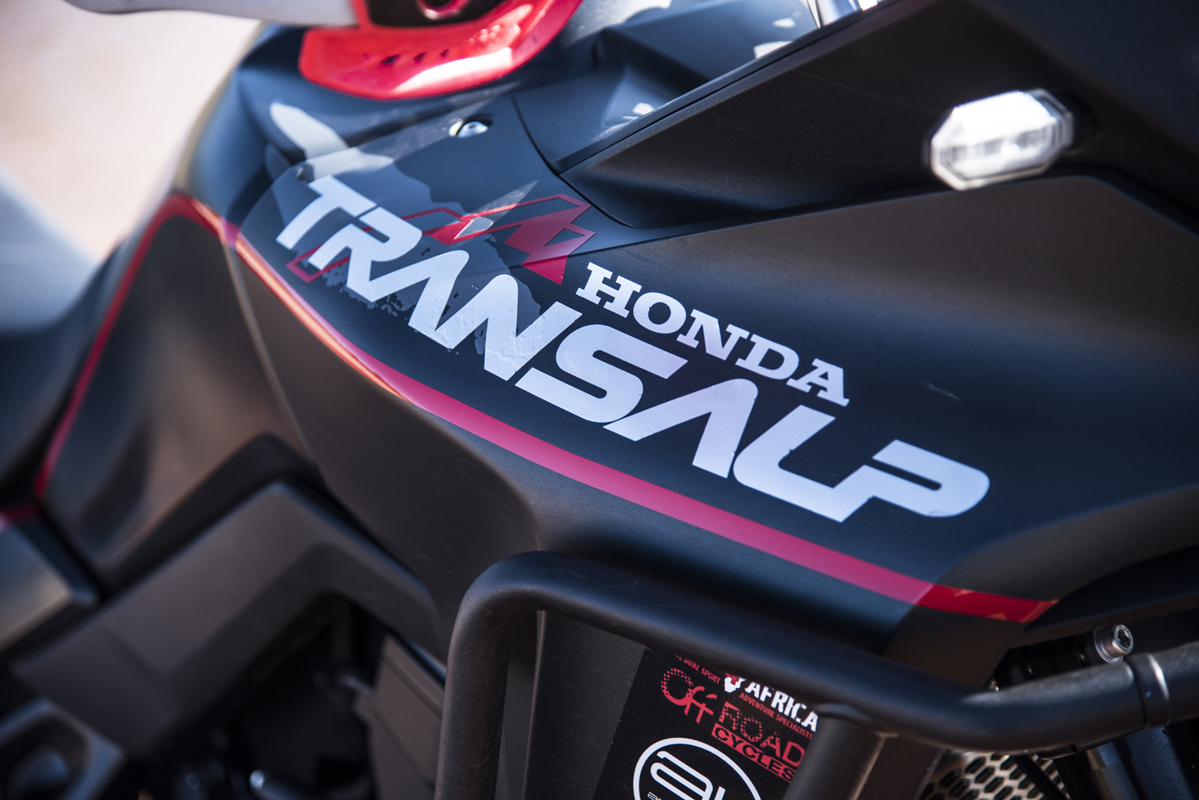
Well, they may have, but in my opinion, they have compromised the strengths of the standard Trannie too much in their quest for offroad performance. Starting with the tyres. The aggressive knobblies ruin the excellent road performance of the Transalp. Gone is the high-speed stability and front-end feel. Braking is similarly compromised. Now let’s talk suspension. There are two elements here. Preload, being how firm the spring in or on the shocks are, and secondly, the damping. This is vital as it controls the rate at which the spring compresses and rebounds over imperfections, bumps, and jumps.
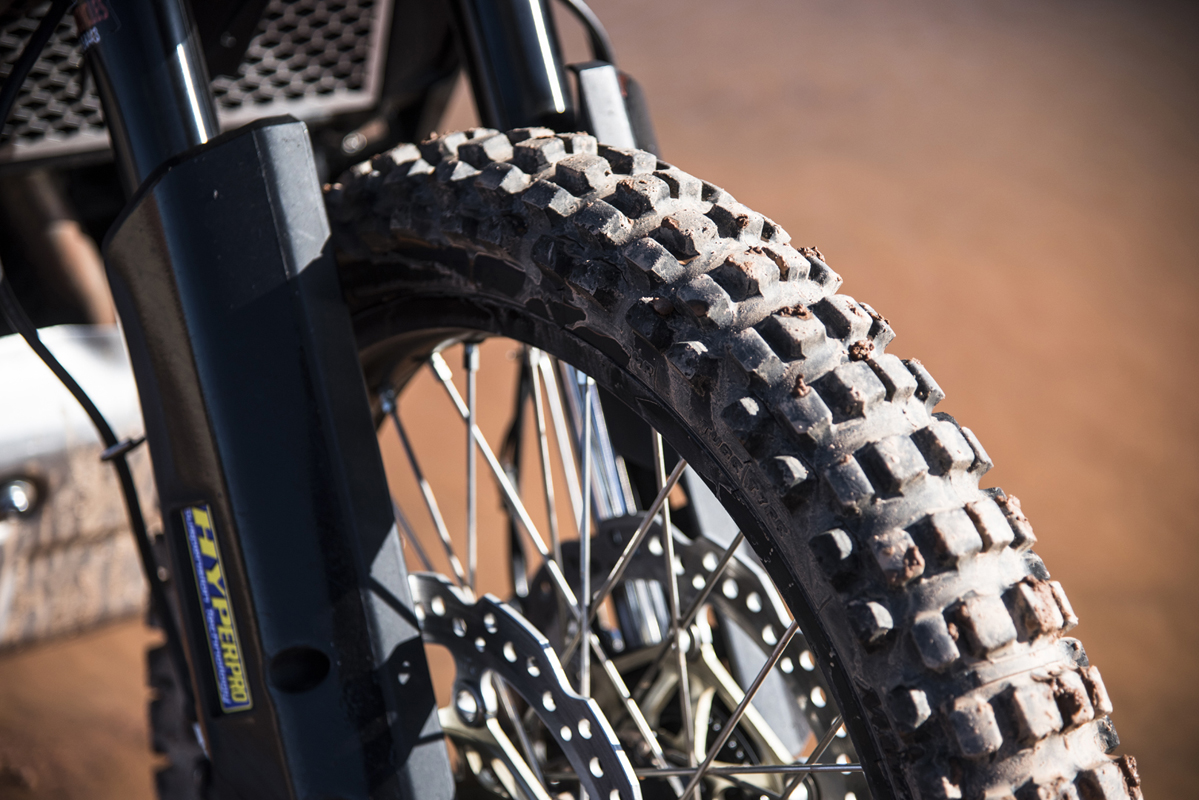
It appears that a Hyperpro spring kit has been fitted to the bike. This entails progressive front fork springs and a firmer rear shock spring. Well, the standard suspension can do with a bit of stiffening up for offroad hard-charging, but the harder springs reveal and exacerbate a problem. The purpose of damping on shocks is to do what it says on the tin, literally ‘damp’, or slow down the bi-directional movement of the shock. Without damping the shock would bounce up and down uncontrollably as the shocks contract and then expand back to fully extended.
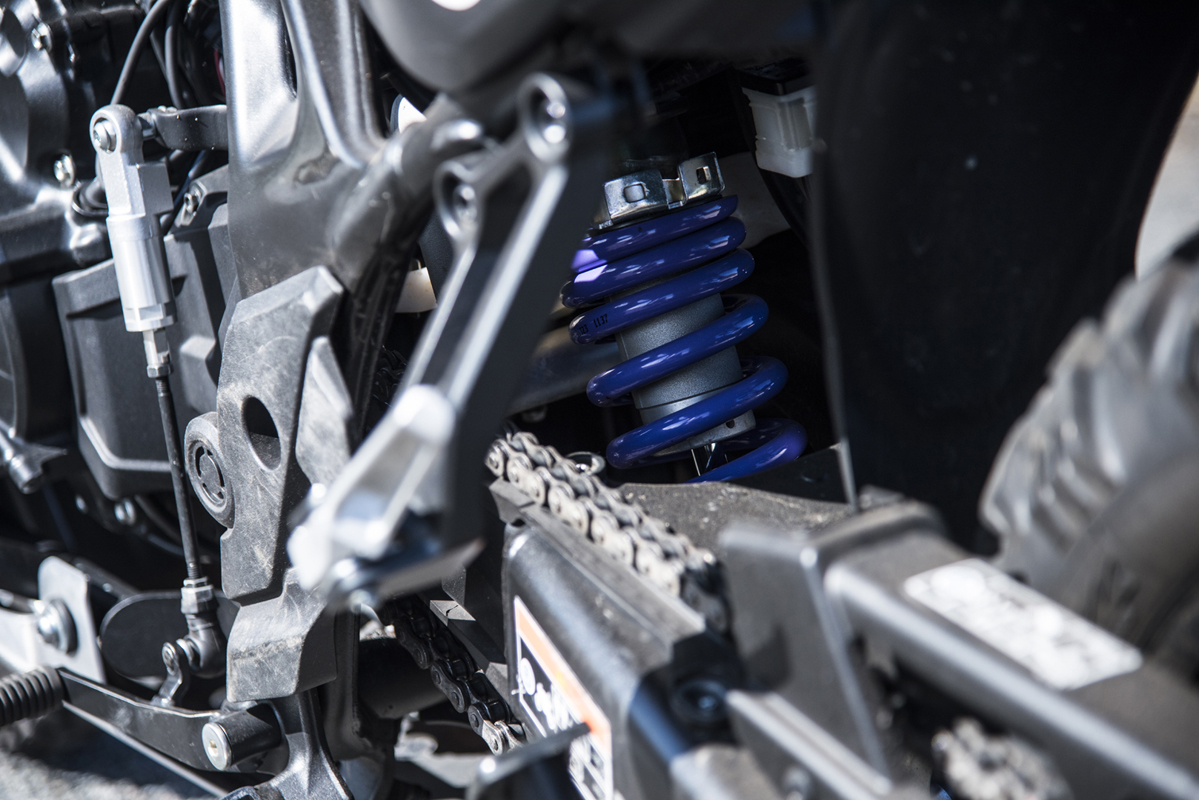
The standard springs are only just contained by the available damping. There is also no damping adjustment, as on the Africa Twin. A general rule of thumb is to dial up your rebound damping when you increase preload, to compensate for the more violent extension of the now greater spring tension. The firmer Hyperpro springs kick back harder but cannot be controlled by damping. The feel is now of a bike with a lot of ‘stiction’ in the shocks, with a harder, more compromising ride and poor shock travel control. I learnt this with my own Africa Twin. When I suggested to suspension guru, Hylton Hayward, that the rear shock was hopelessly soft and I thought it needed a stiffer spring, he found that it was just critically underdamped, even when adjusted to the max. Once revalved, at a fraction of the cost of new springs, it was superb. In fact, I was even able to back off from full preload on the standard spring.
The end result of the Transalp Wild is to have a bike that has none of the positive traits of the standard bike and a whole lot of new quirks built in. The ride now borders on harsh, yet when encountering even a small obstacle drives right through the stroke and virtually drags the belly pan on the ground. So, while the form of the bike is great, the function, in my opinion, has been compromised. This is a great pity because the engine is magnificent, made even more so by the shorter gearing.
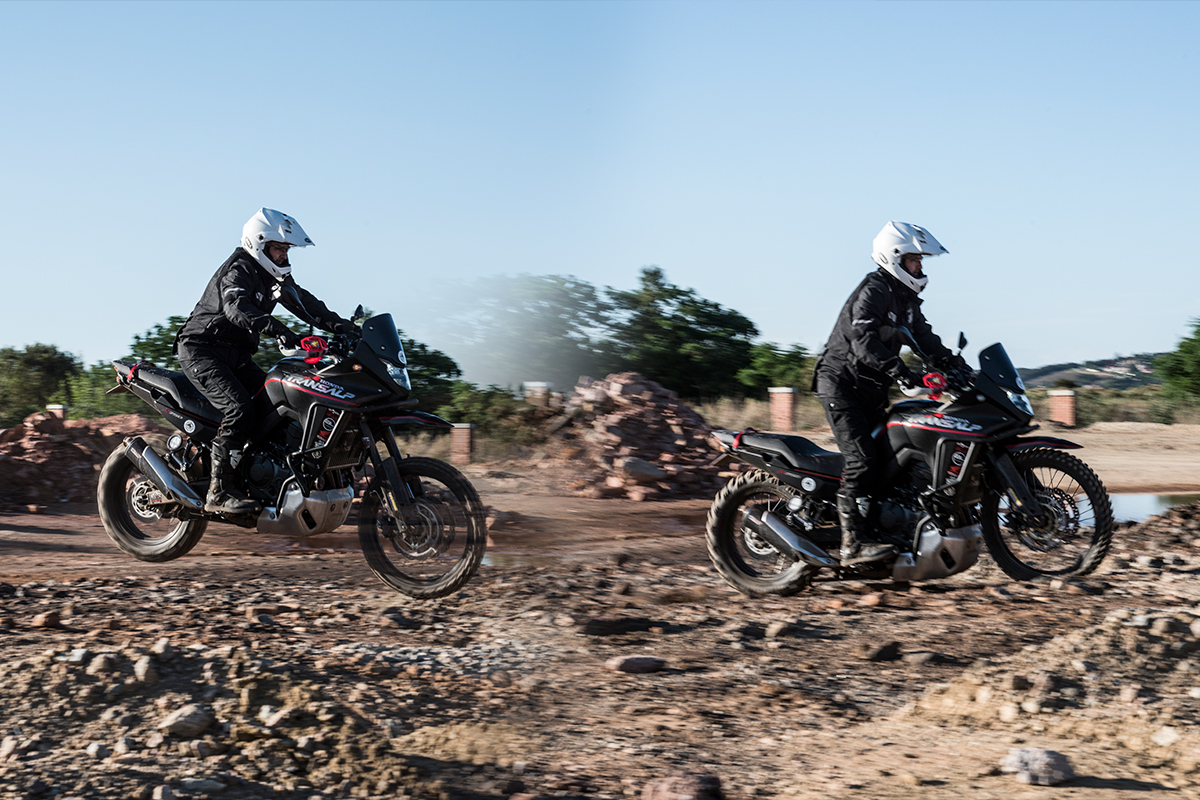
I think that with a slightly different approach, the Transalp could be hugely enhanced and not at all compromised. If it was my call, I would have upgraded the protective gear, because that is what all adventure bike buyers need to do if the bike doesn’t come standard with those bits. That is common spending, so the initial cost of the bike, if lower, leaves you better off. Then buy a quality rear replacement shock. That will set you back around R10,000. You can spec it sprung to suit the type of riding that you favour. The front forks just need some enhanced damping which you can achieve by tweaking the fork oil. If the standard oil is 5 weight, go to 7,5 and voila, better damping. Pirelli Rally STR’s and you are sorted! Now you would have a bike that would work better everywhere.
The strengths of the Transalp are that it has a superb motor, is comfortable, and is relatively light. It is not a Yamaha T7 or KTM 890 offroad, but then again it is a more pleasant road experience than both those bikes. With the tweaks mentioned above it would be very competitive on total cost and be a truly great all-rounder. For those wanting a lighter Africa Twin experience, it would be a very viable option with its tidier dimensions and generally better manoeuvrability.
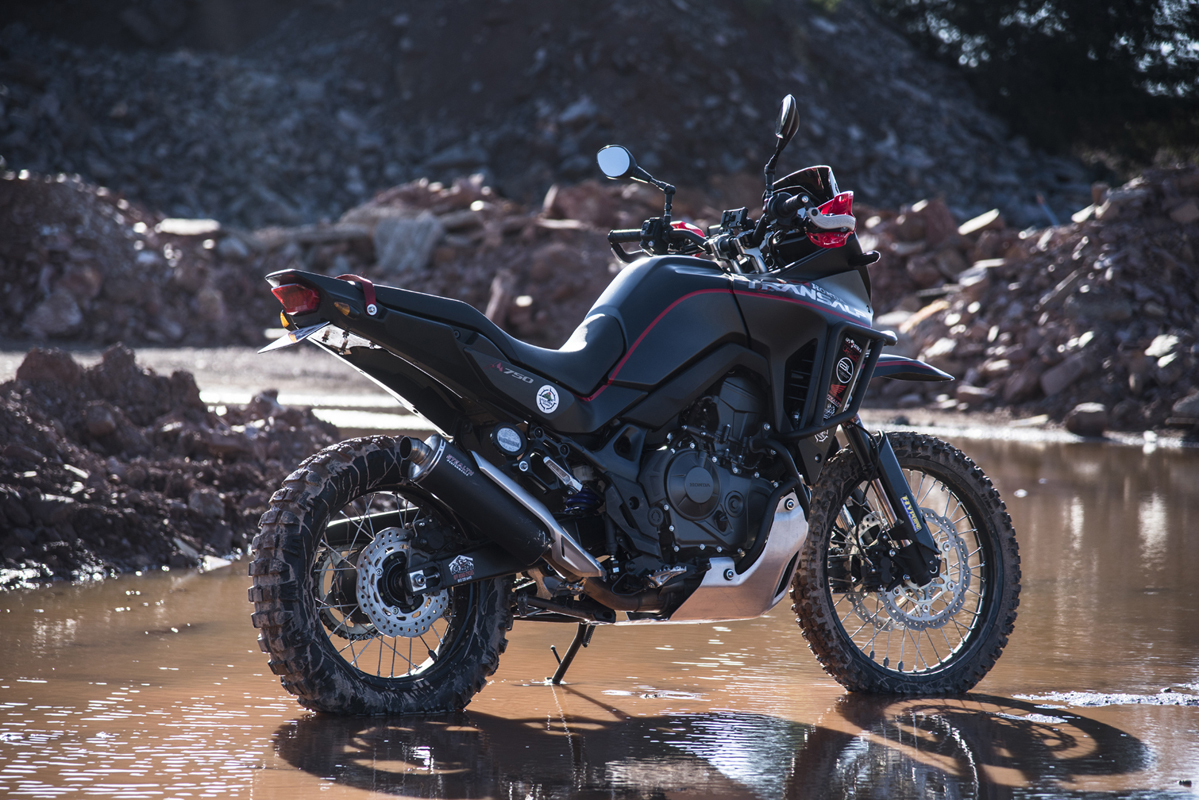
Consider for a moment that the best-selling adventure bike of all time remains one which on paper does not have the credentials to cut it, yet it continues to attract the bulk of buyers to this day. BMW’s venerable GS. The Transalp is just such a bike for the middleweight masses. Its broad spread of talents is undeniable and with a little tweaking, it can damn near be all things to all people. If you are that hardcore weekend warrior wanting to leave bits of yourself and your bike on gnarly trails ever so often, there are better bikes for your purpose, but for the everyday Joe, or should that be Jannie, the Transalp is just great!
Honda XL750 Transalp
For more information on the bike featured in this article, click on the link below…




